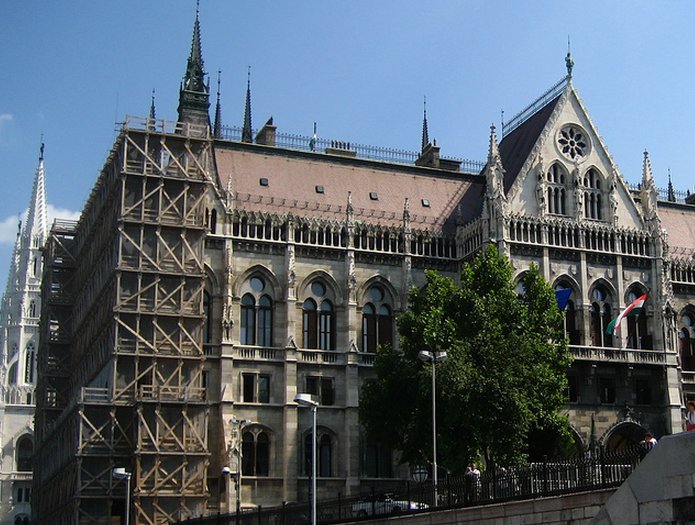The Hungarian Parliament is one of the most visited attractions in Budapest, yet you can often see photos of this beautiful neo Gothic palace with huge scaffolds all over. So the question arises “Why is the Hungarian Parliament so often Scaffolded?”
During the construction of the Hungarian Parliament (between 1885 and 1902) there were more than 500,000 carved stones used for decorating the Gothic walls of the Parliament in Budapest. As the original carved stones were made from soft limestone from Soskut (HU) and Bia (HU), the wall decors began to crumble away in a few years.
To boot, the Hungarian Parliament’s location is quite open to the elements of nature: there are no trees or other buildings to protect the parliament building from the windy riverbank (a perfect choice for a stunning location for aesthetic purposes, but a less fortunate choice for practical considerations). No wonder, the rich decorative limestone carvings, which were part of the grandiose design of the Hungarian Parliament by Imre Steindl, the ingenious architecture of the 19th century, had been being gradually eaten away by 2002.
2002 was the hundredth birthday of the completed Hungarian Parliament building, and this was the year when the major restoration works of the Parliament in Budapest had been still going on despite all the dreams to have it without the unsightly wooden scaffolding by the centenary. The Hungarian company Reneszánsz Kőfaragó ZRt (Renaissance Stone Carving Co) won the tender to restore the Parliament in 1988….
The Parliament or the ‘House of the Country’ i.e. Országház (as the Parliament is called in Hungarian) has been cost a lot of money to be built but its financial legacy is still a huge burden for the Hungarian economy. Nevertheless, the Hungarian Parliament visit and guided tours are still free for EU residents. How long? We cannot predict. But as long as you can visit the Parliament in Budapest without an entrance fee, schedule a guided tour.



Leave A Comment